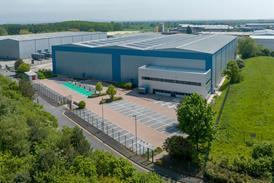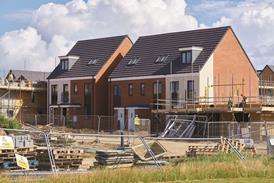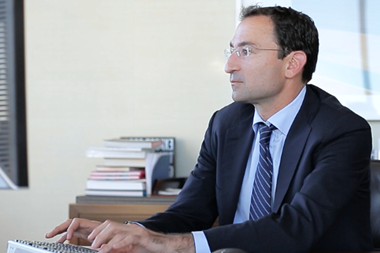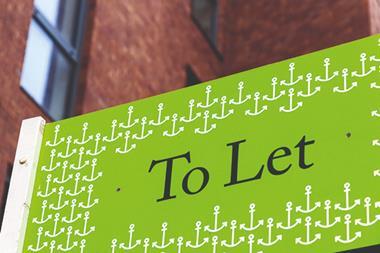Graeme Craig, Director and Chief Executive Officer of Places for London – Transport for London’s wholly-owned property company – speaks to Andrew Teacher about delivering affordable homes, the importance of building sustainably, and its multiple joint ventures across the capital.
LISTEN to this podcast via Apple, Amazon, Spotify or SoundCloud (and many other platforms) or just use the player below:
Places for London manages more than £2 billion of commercial property assets, and as a wholly-owned subsidiary of TfL, takes no funding from the transport body.
It puts the firm in a unique position – it’s no longer in competition for funding with its publicly-owned parent and has full autonomy, but all its profits are all reinvested back into London’s transport network.
“It’s a major business in its own right and it’s one that is going to grow over time,” Graeme Craig explains. “This is something that works for us and critically also it works for TfL.”
Craig is correct – the value of Places for London’s assets puts it in line with FTSE 250 property businesses such as Grainger.
Those with long memories may remember the company’s previous incarnation, TTL Properties Limited.
“I think by common consent TTLP was the worst name in the world,” Craig puts it bluntly.
“We decided on Places for London because we’re ultimately creating places and everything we’re doing is for London,” he explains.
The strategy is now firmly focused on partnerships with a range of established property companies. The joint ventures include a redevelopment project at Earl’s Court with Delancey with scope for 4,500 homes, a site at Edgware with Ballymore aiming at 3,500 homes, and smaller but nonetheless significant ventures with Notting Hill Genesis, Native Land, Helical, Barratt, Landsec and Grainger.
“Places for London sits in the middle of these organisations, all of whom are specialists in what they do, and our job is to work with those multiple partners on a site-by-site basis to create something that works for London,” Craig explains.
“This industry still often operates in silos but that’s not how people live or work,” he continues. “We want to make the best use of the fantastic estate that we’ve got across London.”
Places for London’s ambitions are certainly high. “We’ve got a target to start on 20,000 homes over 10 years,” Craig notes, “and we are committed to delivering 50 percent affordable housing across the portfolio.”
Still, despite the commitment to solving London’s persistent affordability issue, Craig is clear-eyed about the purpose of the business: “We shouldn’t be scared of profit, because profit can pay for good things to be done.”
“We are not a short-term, fast-buck organisation,” he hastens to add. “People should think of us as being like a great estate, but one that’s got assets right across the capital.”
As a London-centric organisation by definition, Craig is keen that Places for London not only represents the diversity of the capital, but actively involves its residents.
“There are far too many people in London who feel that development just happens to their community,” he says. “They don’t feel involved in it, they don’t feel engaged in it, they don’t even understand what the real estate industry is.”
And to rectify this, Places for London is making an effort to focus on the younger generation.
“We’ve engaged over 2000 school kids with many thousands more to come, where we’re actually telling people what it is that we’re doing,” he explains.
“We’re telling people about the vast range of jobs that is available in this industry. We now have people working at Places for London who we first engaged as a shadow board member as a local school kid adjacent to our development sites.”
It’s emblematic of the long-term view that the business takes, which also guides Craig’s thinking on sustainability.
“I am resolutely of the view that if we do the right thing, including from an environmental point of view, the proceeds of that will follow,” he argues. “I honestly do not look at it as a cost.”
Considering his legacy, Craig not only wants to fix accessibility at some of London’s most notorious tube stations – he mentions South Kensington and Morden – but also create a more accessible company in Places for London.
“It’s critical that we can create a diverse, energetic, inclusive team that represents this city who want to take forward the estate that we’ve got,” he says. “That for me would be the legacy above all that I want to see happen.”
LISTEN to this podcast via Apple, Amazon, Spotify or SoundCloud (and many other platforms) or just use the player above.































No comments yet